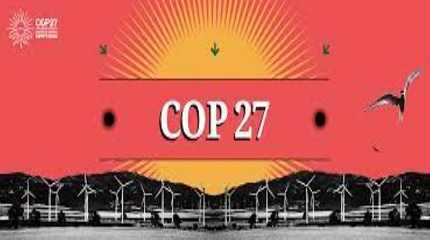
BENBAN, Egypt (AP) — From a distance, the endless landscape of solar panels stretching toward the horizon can easily be mistaken for crops nearing harvest. But here in the desert in southern Egypt, workers have been cultivating another precious commodity: electricity.
After the sun strikes the photovoltaic solar panels, a thermal charge generates electricity that runs to four government-owned power stations distributing power across Egypt’s national grid.
It’s part of the country’s push to increase renewable energy production. With near-perpetual sunshine and windy Red Sea coastlines, experts say Egypt is well-positioned to go green.
Yet it is also a developing country and like many others faces obstacles in making the switch. Much of its infrastructure depends on fossil fuels to power the nation of some 104 million people.
The solar panel farm — Egypt’s flagship project named Benban, after a local village — puts it at the African continent’s forefront when it comes to renewable energy. But questions remain over Egypt’s long-term green energy strategy, and whether there are enough incentives for the cash-strapped government to supply 42% of the country’s electricity from renewable resources by 2035, as it has announced.
Karim el-Gendy, an expert at Chatham House who specializes in urban sustainability and climate policy, says Egypt has failed to meet its goal of having 20% of its electricity sourced from renewables by 2022. The current figure is now closer to 10%, according to the International Energy Agency.
There’s less demand for solar energy, partly due to the influx of natural gas, thanks to new discoveries located in Egypt’s section of the Mediterranean Sea.
“We have seen less interest in the past couple of years in integrated renewable energy projects in Egypt, both in terms of solar, in the south, and wind,” he said.
As host of this year’s global climate summit, known as COP27 and now underway in the Red Sea resort of Sharm el-Sheikh, Egypt has said it will pressure other nations to implement climate promises made at previous conferences. Egypt is not bound by any carbon emissions cap, but it has vowed to mitigate and curb its emission rises across key polluting sectors, such as electricity and transport.
Its use of natural gas has also helped, allowing Egypt to move away from burning coal and oil, much dirtier industries — but nevertheless, gas is still a fossil fuel.
The government has revealed few details on how it will implement or finance the 2035 vision. Foreign investment will likely play a big part, as countries in Europe look south for solar power. The European Bank for Reconstruction and Development has allotted $10 billion of funding for over 150 projects across Egypt, with Benban claimed as one of its major successes.
The sprawling farm is designed to grow as demand for solar energy increases.
“It offers great potential for us and other investors,” said Faisal Eissa, general manager for Egypt at Lekela, a Dutch company that has invested in Benban.
Egypt’s New and Renewable Energy Authority claims Benban has already reduced the country’s annual greenhouse emission output. But there is still a long way to go. In 2020, renewables accounted for 6% of Egypt’s energy consumption, according to the U.S. Energy Information Administration, with petroleum products accounting for 36% and natural gas for 57%. Coal accounted for just 1%.
Egypt may also have less of an incentive to invest in renewables as it grapples with domestic challenges, including an economic crisis brought on by the coronavirus pandemic, Russia’s war in Ukraine and a years-long government crackdown on dissent. Last month, Cairo reached a preliminary deal with the International Monetary Fund that would allow access to a $3 billion loan.
Effects of climate change are already being felt in the Nile River Delta, where rising seas have brought on creeping salt that eats away roots and cakes farms, devastating the livelihoods of Egyptian farmers.
The Arab world’s most populous country accounts for only 0.6% of global carbon dioxide emissions. But it faces high levels of urban pollution. Most of the population lives in densely packed neighborhoods along the fertile banks of the Nile and its northern delta. Here, car fumes and mass transport running on diesel clog the streets. Egyptians’ exposure to air pollution is, on average, 13 times higher than the World Health Organization’s recommended guidelines. It was responsible for 90,559 premature deaths in 2019, according to statistics gathered by the United Nations.
The country’s congested capital city of Cairo is the second top source of greenhouse gas emissions, after the giant offshore Zohr gas field, according to the Climate TRACE.
The remaining 90% of Egypt’s land is uninhabitable desert. By better utilizing the vast expanse and coastlines, the Abu Dhabi-based International Renewable Energy Agency said the North African country could generate over half of its electricity from renewables by 2030.
It’s a different way of viewing the country’s sun-scorched landscape.
“People here have started to look at the sun as a source of power,” said Ahmed Mustafa, who runs one of the area’s many new logistics companies that work alongside Benban’s developers and engineers, supplying them with equipment.
For the locals, the solar farm has been transformative. Thousands worked at the site when it was under construction, and many stayed as technicians and cleaners once it became fully functional.
Ultimately, the development of more wind and solar capabilities will come down to what makes business sense for the government, despite its expressions of good intent, according to el-Gendy.
’’The need to expand its renewable sector all depends on Egypt’s commercial interests,” he said.




